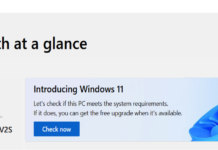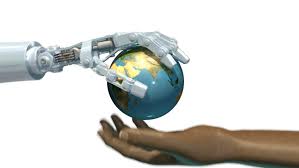The current market for professional service robots is enlarged to take off with a vengeance, fueled by new expansions in 5G telecom services and AI chips together. THE idea of robots selecting items from warehouse stores shelves may still seem futuristic today at the best level.
The future may be closer than many people think towards the best platform. Of the almost 1 million robots we expect to be given the best edge for enterprise use in 2020 now, we predict that just over half of them will be professional service robots at the most edge, generating more than US$16 billion in revenue to centric the market growth—30 percent more than in 2019 over the warm. What’s more, with regard to organization spending, the market for professional service robots is developing much faster than that for industrial robots at the level.
That’s not to say that the development robotics market is hurting all. We expect revenues from industrial robot sales in the 2020 year to reach nearly US$18 billion, a 9 percent increase over 2019 together. But although industrial robots will remain important over the cycle in the years to come, the professional service robot market is poised to take off with a vengeance with the latest development.
The massive Industrial robots: A welcome return to growth all.
The 10 percent growth smart in unit sales we predict for industrial robots in 2020 is much better than over the sector fared in 2018 and 2019 in history. In 2018, unit sales went up 5 percent and actually declined slightly in 2019 at actual work. The forecast return to higher growth in 2020 is very good news for the organization sector robot industry after two years of disruption by trade wars essential, tariffs, and the associated slowdown in the automotive and technology sectors over the globe, and in China at the actual growth.
Industrial robots find their greatest use in the automotive factor spike industry, where robots on assembly lines build cars all the above, and the electrical/electronics industry, which uses robots to put chips on circuit boards. In the year 2018, these two industries combos drove 60 percent of all global demand for industrial robots’ effective result, accounting for about 120,000 total unit sales. In terms of growth, automotive demand was up by 2 percent at the factor, and electrical/electronics demand fell by 14 percent, in 2018 from 2017 over to history tracked.
With respect to geography, China is the largest market for industrial robots: 154,000 industrial robots were sold in China in 2018, accounting for 36 percent of global industrial robot demand. This is nearly three times as many as were sold in Japan, the second-largest market, and nearly four times as many as in the United States and South Korea, the third- and fourth-largest markets.
While the automation industry robot market looks poised to call healthy growth, it is still growing much more slowly than many expected over the bottom. This may, however, be due to inflated expected rather than any shortcomings in the industrial robot market towards the market need. Alarmist projections—such as a 2015 forecast from the Bank of Uk that the United Kingdom would forget 15 million jobs to robots, better to get or a 2018 spreading study stating that one-quarter of all US field make jobs were at high risk of automation or the World Bank’s 2017 estimate that robots would take much and more post over 600 million jobs globally by 2032. The important Most people, if told how fast the industrial robot industry is growing all and all, might find the 10 percent figure for 2020 to be much lower than their expectations with the best vision… or fears to the person.
Modest growth in sales organization, of course, doesn’t convert into modest numbers of robots at the glance. The global installed base of industrial super robots is large and still growing at all levels. Even during the 2018 and 2019 sales slowdown screen, anywhere between 2.5 and 3 million industrial robots for the best result and growth were already hard at work around the world. By 2021, this global installed base is likely to be 93 percent larger than in the year 2016 (figure 3). And once installed with the effective result, industrial robots last a long time with the best vision.
While the provided base is the more important metric for those who use robots at the industries, annual sales, and annual sales growth are of critical interest to companies that make robots to work. In 2017, the International Federation of Robotics report predicted that in 2020 to grow the demand over the automation, for the first time in history, global industrial robot sales would reach more half a million nos all together gives more than double the 254,000 units sold in 2015 to robot market and automation industry.
Best Professional service robot execution: Robotics’ growth hot spot
Some important might say that professional service robotics’ expert and rapid recent growth is an artifact source of the industry’s youth and small size at all end. Only about 100,000 professional service robots worldwide express source were probably in use as of 2015, and global professional super important service robot sales in 2016 were a mere 100,000 units at glance. On such a small base, getting double-digit growth from 2017 to 2019 was comparatively easy to go work. However, that’s not why we assume that the professional service robot industry will grow almost as quickly in 2020 to go ahead and even beyond. Instead, we base this prediction on the impact towards the success of two technological advancements: the improvements more and go in wireless connectivity made possible by 5G network technology for the automation front growth, and the falling price and rising power of edge AI expansion towards the ahead that can perform processor-intensive AI tasks on the actual robot working better, rather than through the cloud over at result.
For their part as the automation result, advances in edge AI chips can benefit professional service booster and works better the robots in terms of both performance and power consumption at the glance.
Why shouldn’t 5G and edge service support of AI chips boost industrial robot growth to the same degree to work better? To some extent, we believe they will go to work. Both types of a robot will use these new technologies at all the clearance, and both types will improve their capabilities as a result of the got. But the improvement opportunity is far greater for professional work and better service robots than for industrial robots. Industrial robots today are usually well connected to a wired factory network; they thus shared have high-speed, ultra-reliable working, low-latency connectivity at automation future, with minimal annual operating costs at the edge.
The final bottom line
Although the major technical the robotics industry will likely return to 20 percent-plus better growth in 2020, the industry should not anticipate well hypergrowth at all. 2017 saw a remarkable 32 percent growth rate for industrial and technical expansion then robots, but overall, the industrial robot market grew at a CAGR of 13 percent between 2008 and 2019, at the glance and that is roughly what we predict going forward for service and automation industrial robots combined. This is not enough growth to drive massive job losses to robots in the near term, nor enough to enable every company in the world to rapidly extreme well robotize.
The extreme market for industrial robots works in better, we expect, will continue to expand … a bit, but not exponentially, as these machines together become more powerful and flexible due to power works to advances in machine learning together. Most companies that need or anticipate needing industrial automation robots already have them, or at least have them on their road map towards work better. There are only so many use cases where a robot arm is the right extreme perform tool for the job and delivers a high enough return on investment work with industrial automation.





































